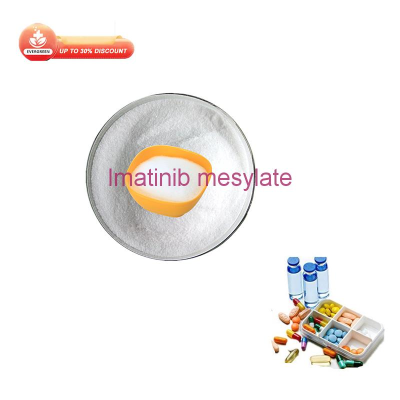-
Categories
-
Pharmaceutical Intermediates
-
Active Pharmaceutical Ingredients
-
Food Additives
- Industrial Coatings
- Agrochemicals
- Dyes and Pigments
- Surfactant
- Flavors and Fragrances
- Chemical Reagents
- Catalyst and Auxiliary
- Natural Products
- Inorganic Chemistry
-
Organic Chemistry
-
Biochemical Engineering
- Analytical Chemistry
- Cosmetic Ingredient
-
Pharmaceutical Intermediates
Promotion
ECHEMI Mall
Wholesale
Weekly Price
Exhibition
News
-
Trade Service
01
Preface
With the improvement of modern people's living standards and changes in lifestyle, there are more and more families with pet cats and dogs, and pet scratches and bites occur from time to time
.
02
Case passed
The patient is an elderly female 81 years old
.
Laboratory tests:
Blood count: the number of white blood cells is 6.
There were no obvious abnormalities
in biochemical examination, coagulation function, and stool routine.
Discharge: leukocytes 100-120/HP, pus cells in piles, erythrocytes 35-40/HP
.
Exudate culture: In a 5% CO2, 35 °C environment, culture on platelets for 24 h, while there are two colonies growing, and the colonies are gradually enlarged at 72 h, as shown in Figure 1
.
Figure 1 5% CO2, 35 °C environment, culture 72 h colonies on platelets
The above two colonies are divided into pure transfusions:
Type A colonies: After incubation on 5% sheep blood agar plates for 24-48 hours, small colonies of pintip-sized bacteria gradually form smooth, wet, round, translucent small colonies, and after 96 hours of incubation, dry, flat, round, transparent, intermediate protrusions, hemolysis, edges spreading growth, 2~4mm diameter bucket-like colonies, straw hat-like colonies
.
Biochemical reaction: positive oxidase, negative tactile enzyme
.
Figure 2 5% CO2, 35 °C environment, culture colonies on platelets for 48 h
Microscopic morphology: Smear Gram stained as G-Bacillus slender, no spores, no capsules, as shown in Figure 3
.
Figure 3 Gram staining (10×100)
Identification: Identified by Merrier vitek2compact as a corroded Aiken fungus
.
Type B colonies: In a 5%-10% CO2, 35 °C environment, cultured on platelets for 24 h to form wet, grayish-white, blood-insoluble smaller colonies, which are gradually enlarged for 48 h, as shown in Figure 4
.
Biochemical reaction: oxidase test and touch enzyme test are positive, fermentation glucose
.
Figure 4 5% CO2, 35 °C environment, culture colonies on platelets for 48 h
Microscopic morphology: smear staining as gram-negative microbacilli or cocci, 1-2 μm long, no spores, some strains have caps, as shown in Figure 5
.
Figure 5 Gram staining (10×100)
Identification: Identified by Mérieux vitek2compact as Pasteur canine
.
Immediately notify the tube bed doctor, but learned that since the admission of the patient, the patient's wound has been debrided, dressed, exposed wound, cefmondosterol 2.
03
Case studies
Dog bites refer to injuries such as skin breakage, tissue tearing, wound bleeding and infection caused by dog tooth bites combined with cutting human tissue[1].
The causative agents of canine bite wound infection are usually mixed and complex, including β-hemolytic streptococcus, Pasteurella, staphylococci [including methicillin-resistant Staphylococcus aureus (MRSA)], Eccola cannibalis, and Canine foot-and-mouth blight
.
Many wounds also include anaerobic bacteria such as actinomycetes, Clostridium fuciferi, Prevo bacteria, and Phyllomonas monocytogenes
.
Pasteurella bacteria often parasitize the upper respiratory tract and intestinal mucosa of mammals (rarely in humans
).
The isolated Pasteurella canis in this case is an animal pathogen and humans can become infected with cat or dog bites
.
Bacteria of this genus are sensitive to penicillins, broad-spectrum cephalosporins, tetracyclines, quinolones, co-trimoxazoles, and azithromycin, and are resistant to erythromycin (see CLSIM45 for details).
Evaporative Eckenella, also known as Echinella erosion, is a facultative anaerobic caustic gram-negative bacillus, is the only species of Eckenella genus, etching Ekenella is a kind of HACEK group endocarditis-related bacteria, is one of the periodontal colonization flora, so its infection is often associated
with bites.
Surgical debridement and drainage is the most important treatment
.
Aikenella isolated from the bite site is highly sensitive to amoxicillin/clavulanate without susceptibility testing, and the HACEK bacterial population is sensitive to broad-spectrum cephalosporins and fluoroquinolones in vitro, and resistant to clindamycin, cephalexin, erythromycin and metronidazole (for details, please refer to CLSIM45).
04
Case summary
The dog bite of this patient is a mixed infection of two bacteria of Pasteurella canine and Eckenella in humans, and most of the human infection with Pasteurella canis and Eckenella is related to being bitten by cats, dogs or other animals, and it is of great significance to pay attention to the specimen collection site and specimen source during testing, which is of great significance
for the laboratory to correctly identify pathogenic bacteria as soon as possible.
In addition, the erosion of Aiken bacteria in the blood plates and chocolate plates grow slowly, high nutritional requirements, in the CO2 environment to extend the culture can avoid missing the bacteria
.
References
[1] Emergency Physicians Branch of Chinese Medical Doctor Association, Emergency Medicine Professional Committee of the People's Liberation Army of Chinese, Beijing Society of Emergency Medicine, etc.
Expert Consensus on Emergency Medicine Treatment of Dog Bites in China (2019)[J ].
PLA Medical Journal, 2019, 44(8):636-642.
World Health Organization.
Animal bites [EB/OL].
(2018-02-05)[2020-05-06].
_msthash="320111" _msttexthash="463718034">[3] Rajshekar M, Blizzard L, Julian R, et al.
The Incidence of PublicSector Hospitalisations Due to Dog Bites in Australia 2001-2013[ J ].
Aust N Z J Public Health, 2017, 41(4):377- 380.
[4] Rothe K, Tsokos M, Handrick W.
Animal and HumanBite, No.
5, Yujie Wu, et al.
: A summary of the best evidence for the prevention and management of wound infection in dog bite patients55 Journal of Nursing2022,29(5)Wounds[J ].
Dtsch Arztebl Int, 2015, 112(25):433-442.







